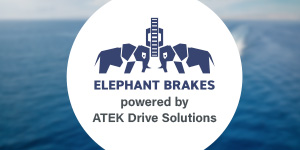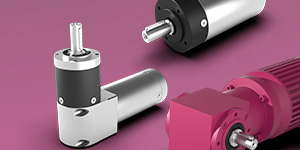A comprehensive guide to designs, materials, and applications of disc brakes in drive technology.
What are the main differences between fixed caliper and floating caliper brakes?
Fixed caliper brakes have brake pistons on both sides of the brake disc, providing a very high, uniform clamping force and stiffness. They are particularly suitable for high-performance and heavy-duty applications.. Floating caliper brakes (or pin caliper brakes) have pistons only on one side;the caliper slides to compensate for pressure. They are more cost-effective and simpler in design, making them an economical solution for many standard applications but may exhibit lower peak performance than fixed calipers.
When are disc brakes the best choice for industrial applications?
Disc brakes are ideal when a sealed, oil-bath running brake without an external caliper is needed. They are particularly robust and insensitive to dirt,which makes them perfect for harsh environmental conditions, such as in construction machinery gearboxes or in heavy industry. Their strength also lies in applications with low switching frequency,where durability and low maintenance requirements are essential.
What influence does the material of the brake disc have on performance?
The material of the brake disc is crucial for weight, heat dissipation, wear resistance, and cost.. Cast iron is standard due to good thermal conductivity and cost. Carbon-ceramic discs offer significant weight savings (e.g. >10 kg per vehicle) and extreme heat resistance for high-performance applications. For specific industries such as food production, stainless steel brake discs are available due to their corrosion resistance.
Why is cooling so important in disc brakes and what methods are there?
Disc brakes can reach temperatures of up to 700°C. Effective cooling is erreichen. Effektive Kühlung ist critical to avoid brake fading and ensure a constant braking performance. Internally ventilated brake discs Innenbelüftete Bremsscheiben use cooling channels that direct air through the disc, reducing temperatures up to 30% more effectively than solid discs. Perforated or slotted discs additionally improve heat dissipation and performance in wet conditions.
What are the advantages and disadvantages of perforated or slotted brake discs in industry?
Perforated and slotted brake discs can improve braking performance under extreme conditions, especially in wet conditions, by up to 10%, as they effectively aid in directing water, dirt, and gases away from the friction surface. This leads to a better response.The downside is a potentially higher wear of the brake pads due to the edges of the holes or slots and possibly higher costs.
How do environmental conditions affect the selection of the right disc brake?
Environmental conditions such as dust, moisture, aggressive media, or extreme temperatures have a significant impact on the lifespan and reliability of a brake. In dusty environments (e.g., cement plants) or in high moisture conditions (e.g., port facilities), sealed systems like disc brakes or brakes with special seals and corrosion-resistant materials (e.g., stainless steel) are often necessary.
What role does the actuation type (hydraulic, mechanical, pneumatic, electric) play in the selection?
The actuation type determines response, braking force, and integration capability.. Hydraulic systems provide high, precise power transmission (>150 bar). Mechanical brakes are simple and robust, often used for parking brakes or simple machinery. Pneumatic brakes are common in industry (e.g., conveyor systems) and offer fast response times (<100ms). Electric brakes, often electromagnetic, enable precise control, ideal for servo drives and automated systems.
What are typical maintenance errors with disc brakes and how can they be avoided?
A common mistake is the use of unsuitable lubricants,e.g., copper-based pastes, which can cause resonance vibrations and squeaking. Instead, special lubricants recommended by the manufacturer should be used. Another mistake is the inadequate cleaning of the wheel hub before installing new discs, which can lead to lateral run-out. It is also important to strictly adhere to wear limits of discs and pads and ideally exchange both together axially.
The correct selection and sizing of the disc brake design is crucial for safety and efficiency; precise adjustment can reduce complaints about brake noise by up to 15% und significantly prevent premature wear..
Advanced cooling concepts and materials greatly enhance performance: internally ventilated discs lower operating temperatures by up to 30% more effectively,while perforated/slotted designs can improve braking performance under extreme conditions by up to 10%..
A systematic approach to maintenance, such as the joint axial exchange of brake discs and pads, can extend the lifespan of the components by up to 20% and ensure an optimal, quiet braking function as well as lower total operating costs..Discover the variety of disc brakes: from solid disc brakes to carbon-ceramic brakes. Find out which design is best suited for your specific requirements.
Choosing the right disc brake is crucial for the performance and safety of your industrial applications. ATEK Drive Solutions provides you with a detailed overview of the various designs and their respective advantages and disadvantages. Do you need personalized advice? Contact us now! Contact us.
Do you need help selecting the optimal disc brake for your drive solution?
Get a non-binding consultation now!
Understanding the basics and operation of disc brakes
Disc brake designs in detail: Which brake type is right for your application?
Choosing the right disc brake is complex. This article explains various disc brake designs and helps find the optimal solution for specific requirements to provide a comprehensive insight into the different types of disc brakes. Hydraulic versus mechanical actuation
Hydraulische versus mechanische Betätigung
The choice between hydraulic disc brake (precise power transmission >150 bar) and mechanical variant (easier maintenance, e.g., agricultural machinery) is a common consideration when it comes to different designs of disc brakes. The decision depends on braking performance and environmental conditions. Types of brakes comparedThe core principle: energy conversion through friction..
The core principle of every disc brake is the conversion of kinetic energy into heat through friction between pads and disc, which must be efficiently dissipated. An emergency stop (2t vehicle, 100 km/h) releases about 770 kJ of energy.
Effective heat dissipation is crucial for constant braking performance. Effektive Wärmeabfuhr ist entscheidend für konstante Bremsleistung.
Importance of correct design
An automobile manufacturer reduced complaints about brake noise by 15% by precisely adapting the design of the disc brakes to the vehicle weight. The correct sizing prevents overheating and premature wear. Information on the design of your brake disc is relevant.Analyze brake caliper designs in detail
Fixed caliper brakes: powerhouses for high demands.
To secure heavy loads (e.g., cranes), fixed caliper brakes, an important type of disc brake,, with up to eight pistons, ensure maximum, uniform clamping force. Fixed calipers provide the highest braking performance and stiffness, ideal for heavy-duty applications.
- Fixed caliper brakes: offer the highest braking performance and stiffness, ideal for heavy-duty applications.
- Floating caliper brakes: an economical solution (up to 30% cheaper than fixed calipers) for standard applications that combines good performance with cost-effectiveness.
- Disc brakes: sealed, oil-bath running brakes that are robust and insensitive to dirt for harsh environments. These special brake variants are designed for specific use cases.
- Fixed calipers often utilize multiple pistons (up to eight) for maximum, uniform clamping force.
- Floating calipers (pin calipers) have pistons on one side and a sliding caliper.
- Disc brakes are ideal for low switching frequency and when no external caliper is desired (e.g., construction machinery gearboxes).
Floating caliper brakes (pin caliper brakes): the economical solution.
Floating caliper brakes (pin caliper brakes) are found in many standard applications (passenger cars, conveyors). Their construction (pistons on one side, sliding caliper) is more cost-effective (up to 30% cheaper than fixed calipers). This design combines good performance with cost-effectiveness. More information on industrial disc brakes..
Special case of disc brakes: sealed power.
Does an application require a sealed, oil-bath running brake without an external caliper (e.g., construction machinery gearbox), disc brakes – a specific disc brake design – provide a robust, dirt-insensitive solution. Ideal for harsh environments and low switching frequencies. Materials science and cooling strategies for brake discs optimization.
Materialwissenschaft und Kühlstrategien für Bremsscheiben optimieren
Brake disc materials: from cast iron to ceramic.
Over 90% of passenger car brake discs are made of gray cast iron. High-performance vehicles (e.g., Porsche 911 GT3 RS) use carbon-ceramic discs (>10 kg weight savings). Material selection affects weight, heat dissipation, wear resistance, and therefore the properties of various disc brake designs. For specific requirements (e.g., food industry), there are brake discs made of stainless steel available.
Cooling concepts: Avoiding heat buildup
Brake discs can reach up to 700°C. For heat dissipation, for example, ventilated brake discs (often used on front axles) lower temperatures up to 30% more effectively than solid discs thanks to cooling channels. Such different designs of brake discs are crucial for performance. Effective cooling prevents fading and ensures consistent brake performance.
Drilled and slotted discs: Pros and cons
Drilled/slotted brake discs (in sports cars) improve wet performance and gas expulsion, which can enhance braking performance by up to 10% under extreme conditions. These designs improve performance but may increase pad wear.Application-specific selection criteria for disc brakes define
Industrial champions: Brakes for machines and systems
For precise stopping of robot arms (high-speed assembly), special electromagnetic disc brakes for servo drives are often used for exact positioning. In packaging conveyor systems, pneumatically actuated disc brakes are common (response time <100ms). Industrial requirements (cycle numbers, holding functions) determine the choice of suitable disc brake designs.
- Industrial requirements such as cycle numbers and holding functions are crucial for the selection of brake design.
- Electromagnetic disc brakes for servo drives enable exact positioning in applications like robot arms.
- Pneumatically actuated disc brakes with fast response times (<100ms) are widespread in conveyor systems.
- In vehicle technology, disc brakes offer safety gains for trucks through shorter stopping distances and reduced maintenance costs.
- Disc brakes are gaining ground in heavy-duty transport and rail vehicles due to superior performance, highlighting the variety of design principles of disc brakes that come into play.
- Environmental conditions (dust, moisture) often require special seals or corrosion-resistant materials.
- The choice of brake must be adapted to the specific operating conditions to ensure durability and reliability.
Vehicle technology: Safety on wheels and rails
Modern trucks often use disc brakes instead of drum brakes. Reasons: Safety gains from shorter stopping distances (up to 5m less from 80km/h) and lower maintenance costs. Disc brakes are also establishing themselves in heavy-duty transport/rail vehicles due to superior performance, which underscores the diversity of disc brake designs .
The influence of environmental conditions
A brake in a dusty cement factory or a humid port facility imposes different requirements than in a climate-controlled production hall. This may require special seals or corrosion-resistant materials, as in the case of stainless steel disc brakes, highlighting the importance of the right brake construction raises. Environmental conditions affect durability and reliability.Mastering maintenance, diagnosis, and optimization of disc brake systems
Precise inspection: The foundation for safety
Brake squeal often has detailed causes. A run-out check of the brake disc (to reveal deviations >0.05mm) can prevent vibrations/noises. Regular inspections and precise measurements are essential for operational safety.
The pitfalls of lubrication: Less is often more
A mistake in brake maintenance is the use of copper-containing pastes (resonance vibrations, squeaking). Suitable specialty lubricants (e.g., Bosch Superfit) on the guide rails of the pads prevent this. Correct selection/application of lubricants is crucial for quiet operation.
Replacing wear parts correctly: A systems approach
Automobile clubs recommend changing discs/pads jointly by axle for optimal braking performance and even wear (lifespan +20%). Joint replacement ensures performance and avoids consequential damage. Further information: Industrial brakes, Brake technology.
The careful selection of the disc brake design is crucial for safety and efficiency. Aspects such as material, cooling, and caliper type are important distinguishing features for the different disc brake designs. An informed decision ensures the optimal braking solution.

